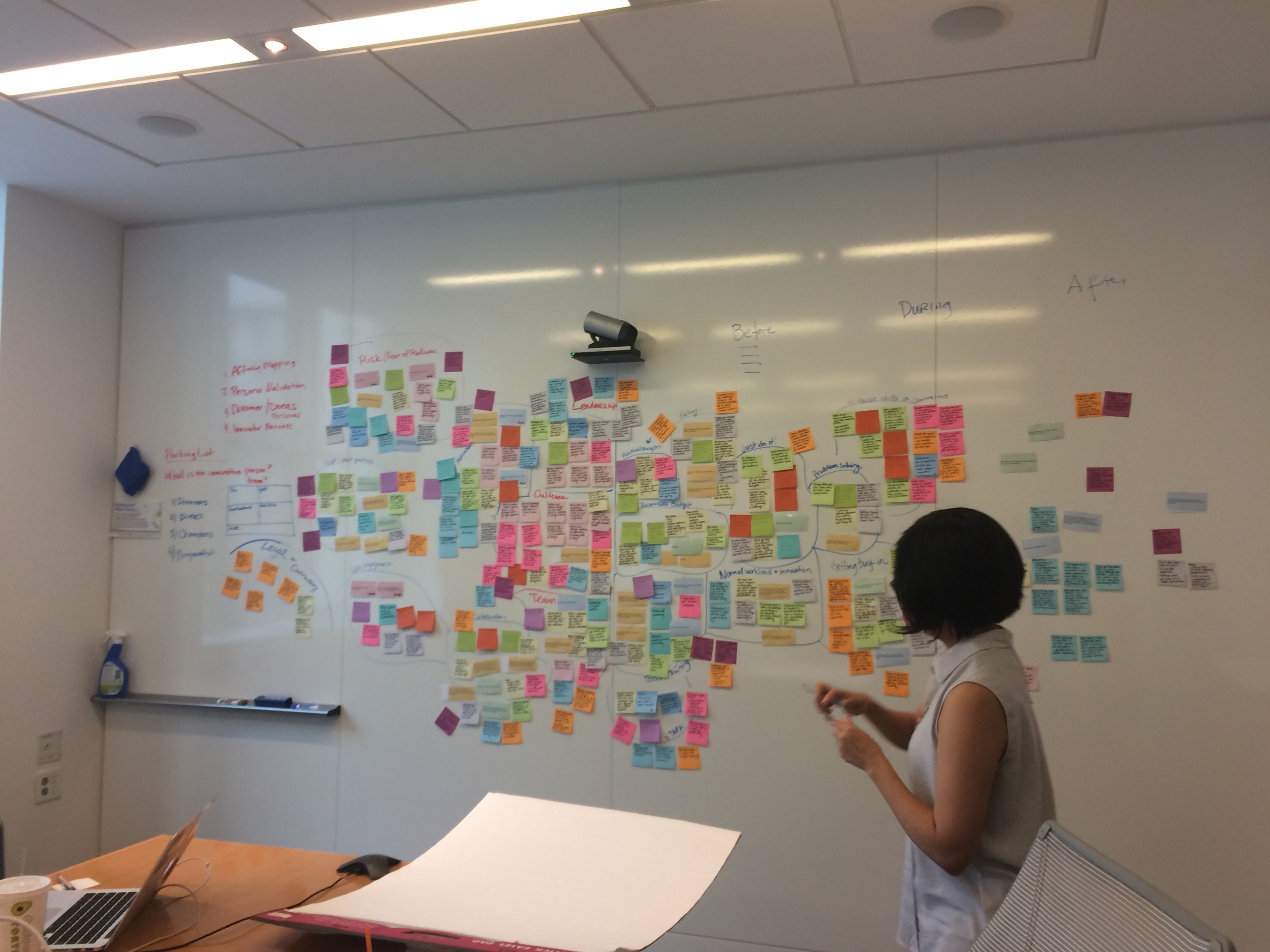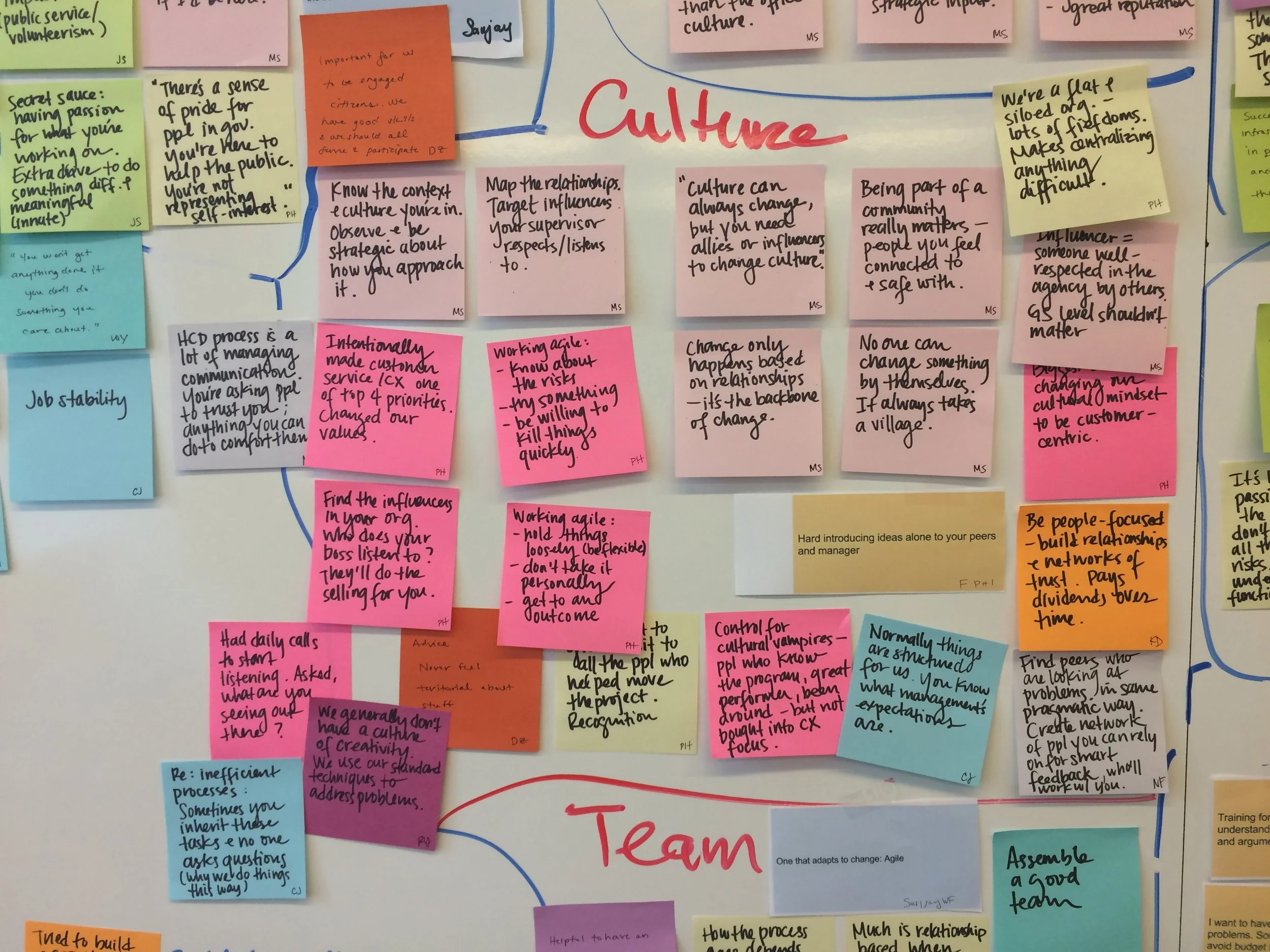Better Government Movement: Archetypes & UX Research
The Better Government movement, now known as the Innovation Adoption Community of Practice, was a project to spur innovation in government by creating tools, community, and support for innovators within. The group consisted of federal employees who wanted to make government work better for the people. I was a member of the UX research team that developed archetypes to help understand who's involved in innovation, and how it happens in federal government agencies.
Background and team
The team fluctuated between 3-7 people with varying degrees of UX, human-centered design, and government experience. All were government employees who volunteered their time for this project.
Before we came on board, a set of assumptive personas was created that hadn't yet been validated. Our team set out to interview federal employees who were innovating in their agencies, to gather qualitatiave data and iterate on the personas.
Process and outcomes
- We interviewed 23 people across 8 agencies, and did affinity mapping during synthesis sessions to see what themes and attributes emerged.
- We landed on 4 primary archetypes: Dreamers, Doers, Champions, and Gatekeepers. Those we initially interviewed clustered in the Dreamer and Doer camps, with a few Champions sprinkled in.
- We did another round of interviews and synthesis for the Champions, and then for Gatekeepers.
- The name "Gatekeeper" came from someone we interviewed — the team wrestled to find the right name for this archetype and found a user's own words said it best.
What we learned
- By focusing on attributes, goals and frustrations — instead of demographic details — we found that the personas resonated with people in a much stronger way than the assumptive personas had.
- When we presented the personas at Community of Practice meetings, people readily saw themselves in the descriptions. It was notable that they could identify with more than one persona, as they might serve in different roles based on the project.
- Some people missed the demographic details, which we kept note of as we iterated.
- We decided to pivot to the term "archetypes" instead of "personas," as we learned people often wear different hats from project to project, and can move between roles in phases of a project.
My role
- Co-wrote interview guides, recruited participants, conducted interviews, visual design/layout.
- Helped facilitate synthesis sessions and presented the research at Community of Practice meetings—to get feedback, and as a workshop for attendees to apply the archetypes to their own projects.





